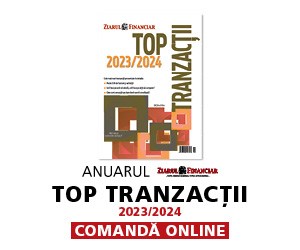The main projects for the rehabilitation of Romania's railway infrastructure are trans-European corridors IV and IX, which total over 2,000 km of railway and investments worth above 10bn euros.
EU accession has forced the Romanian state to invest in the development of its rail network through the creation of some high-speed routes that would link Greece and the rest of the continent.
The two European corridors that cross Romania are corridor IV (a link between Germany and Greece) and corridor IX (between Finland and Greece), which total almost 10,000 km of track.
The rehabilitation of the over 2,000 km of railway in Romania, in order to become part of the European rail network, will require investments worth at least 10bn euros, with the objective being for passenger trains to reach a maximum speed of 140 km/h and compliance with EU safety standards.
At the same time, the Ministry of Transport has started to modernise passenger railway stations and bring them in line with European safety and operative standards. At present, Romania has only 12 "Euro-stations", whilst another 30 stations are included in this programme.
Corridor IV runs from Curtici to Constanta along 2 sections, namely (Arad-Constanta and Arad-Calafat). Necessary investments (as estimated by CFR) amount to over 6bn euros for the almost 1,400 km.
Corridor IX (which crosses Moldavia and runs from Iasi to Giurgiu) travels a length of 618 km, which involves rehabilitation costs worth around 4.5bn euros, according to current estimates.
In the wake of rehabilitation works, passenger trains will be able to reach speeds of up to 160 km/h along at least 1,000 km of railway. In most cases, the deadline for the rehabilitation projects is the end of 2018.
"We will not have high-speed trains (of over 200 km/h i.e.) in Romania earlier than 2025," stated Constantin Onoiu, head of the projects department at CFR Infrastructura. He specified that in order to reach such high speeds an IT rail traffic management system would also be necessary.
Until the early '90s, CFR held the leading position in terms of passenger and freight transportation, but more recently lost its position to road transport. The phenomenon is apparent across Europe, as EU officials announce a series of measures intended to bring passengers back to rail travel.
Adrian Vlaicu, a marketing manager at CFR Calatori, recently stated that CFR could not compete with road infrastructure as well, because of the toll (TUI) levied by CFR Infrastructura at 3 euros per km.
In late 2006, CFR Calatori accounted for 98.8% of railway passenger traffic, but the situation may change, as CFR is obliged to open the market to private European operators.
Pentru alte știri, analize, articole și informații din business în timp real urmărește Ziarul Financiar pe WhatsApp Channels












































